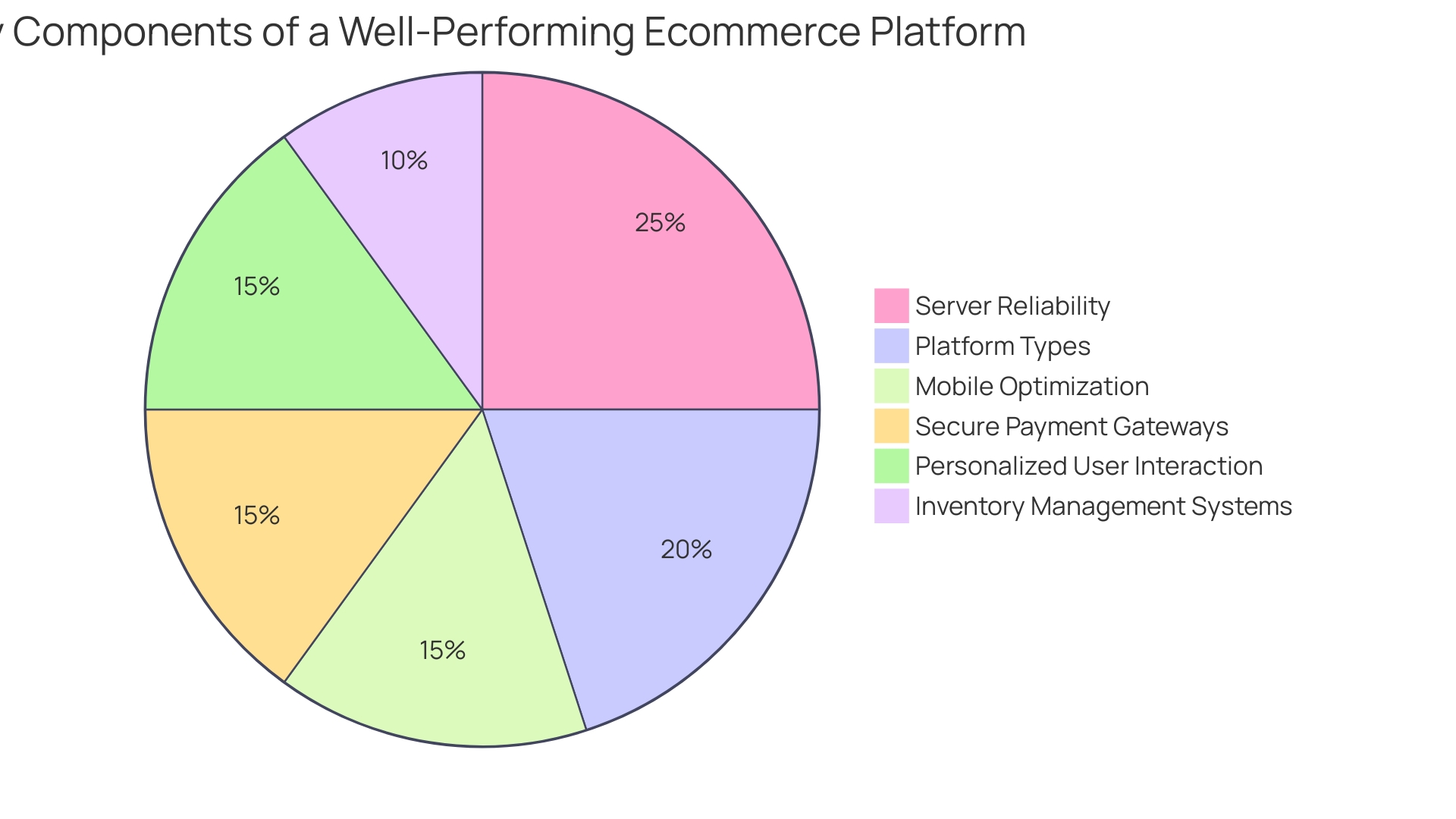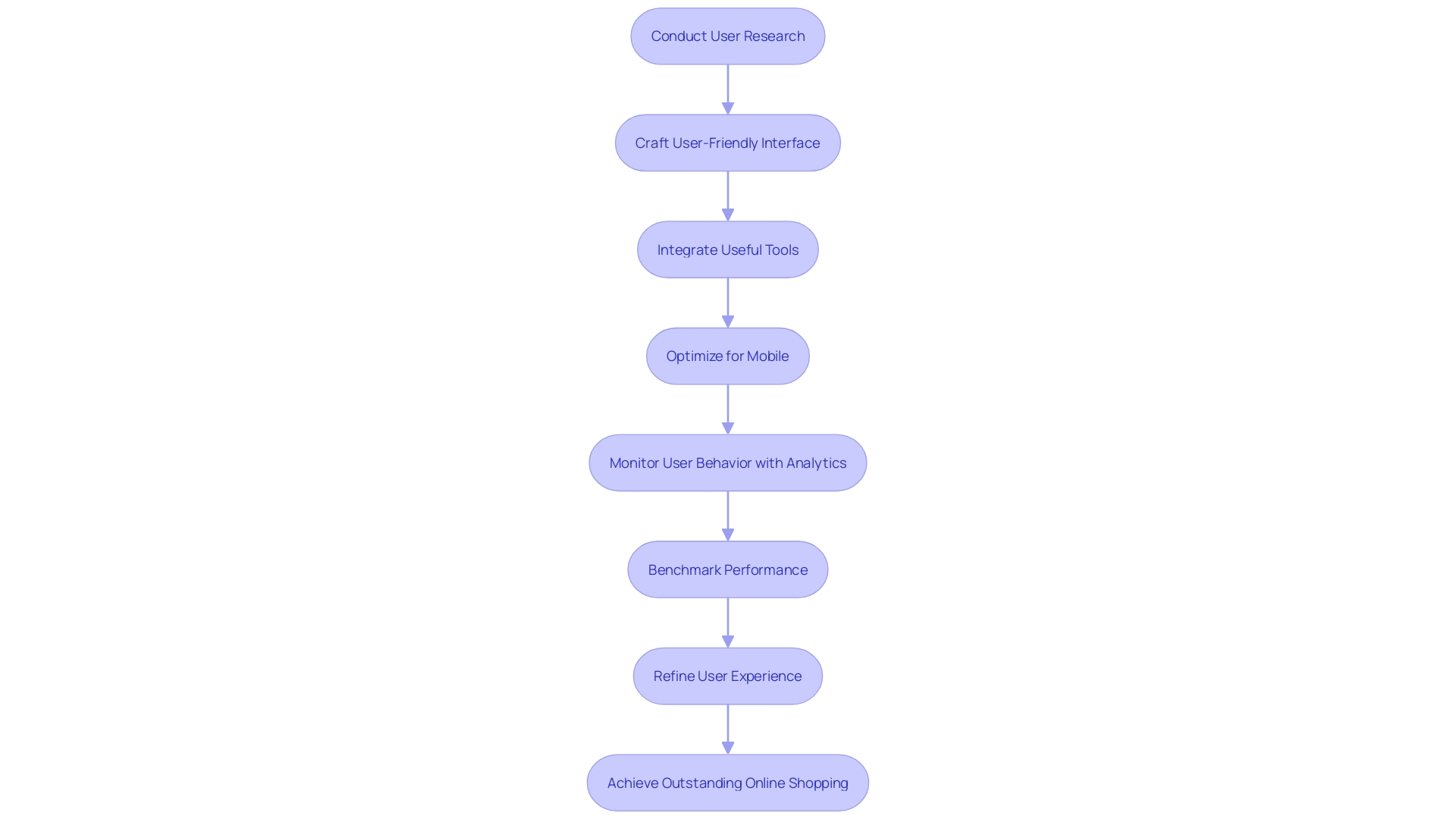Introduction
In the realm of e-commerce, developing a strong brand and unique value proposition is crucial for standing out in a crowded market. This article explores the importance of articulating your brand message and values clearly, as well as capitalizing on what makes your e-commerce venture special. Additionally, it delves into the significance of building a high-performing e-commerce website, including reliable hosting, fast loading times, and secure payment gateways.
Optimizing the user experience (UX) is another key aspect discussed, emphasizing the need for intuitive navigation, personalized recommendations, and mobile responsiveness. Lastly, the article highlights the importance of driving traffic to your e-commerce site through effective search engine optimization (SEO) strategies, such as keyword research, high-quality content creation, and backlink building. By implementing these expert recommendations, you can create a compelling online presence and attract a loyal customer base.
Develop a Strong Brand and Unique Value Proposition
In the realm of e-commerce, the uniqueness of your identity and value proposition cannot be emphasized enough. They are the pillars of your business's identity and what set you apart in a crowded market. It's essential that your message and values are expressed with crystal clarity, directly resonating with your audience. Take a leaf out of Casa Bikes' book, where they carved a niche in Cambridge's Kendall Square by specializing in electric bikes and scooters, tapping into the city's investment in bicycle infrastructure and the shifting consumer behavior towards sustainable commuting.
Your products or services must have a unique story, just like Gothrider Coffee emerged from an unconventional path to create a distinct coffee label with an edgy, rebellious aesthetic. Similarly, your e-commerce venture should capitalize on what makes it special. Trusted quality and a compelling brand story, as evidenced by a dedicated team of professionals in the USA, can elevate your product's perceived value and foster customer loyalty.
In the online realm, Adobe's strategy of investing significantly in online marketing since 2010 is evidence of the effectiveness of a robust online presence. This foresight has made Adobe a staple in the digital community, signifying the importance of an integrated and creative marketing approach.
Moreover, a robust e-commerce platform is not just about a well-hosted website; it's about crafting an ecosystem that offers information and solutions while fostering interactions. As ShoppersStop.com demonstrates with their omnichannel approach, creating a unified view of the customer and inventory can be central to your strategy.
Remember, your online domain is your world stage. Select a domain name that mirrors your ethos, just as you would meticulously choose the physical location of a brick-and-mortar store. And with 70% of consumers valuing trust in a company, per Kantar's study, your organization's equity is intrinsically connected to the consumer's perception and interaction with your business.
To guarantee the success of your e-commerce platform, concentrate on establishing a robust, distinctive brand presence that resonates with your audience, much like the unforgettable experiences curated by businesses that grasp the profound influence of brand awareness and customer value analysis. With the right blend of distinctiveness and technological expertise, your e-commerce platform can not only attract but also retain a loyal customer base.
Build a High-Performing E-Commerce Website
Utilizing industry-leading platforms such as AEM, Drupal, and WordPress, it's possible to create an ecommerce platform that not only draws in but also maintains a devoted customer base. These platforms provide a strong foundation for a seamless online shopping experience, which is increasingly important as e-commerce evolves.
For example, the Dunelm Group, a leading homewares retailer in the UK, utilizes its online platform to generate approximately 35% of its revenue, with their website experiencing over 400 million sessions annually. This level of success highlights the significance of a robust infrastructure that can support substantial traffic and complex transactions.
To emulate such success, ensure your ecommerce site is hosted on reliable servers, guaranteeing it's accessible globally at any time. This is more than just a technical necessity; it's about creating an online environment that facilitates interaction and fulfills your organization's objectives. Remember, with over 1.09 billion web pages on the internet, standing out is crucial.
The present digital environment requires online platforms that load rapidly and offer an optimal user experience, especially on mobile devices. This is not just preference but a business imperative; over 50% of consumers will dismiss a brand with a poorly designed mobile site. Furthermore, mobile-friendly sites boasting a load time of two seconds or less see a 15% higher conversion rate.
In the age of unified commerce, it’s paramount to integrate secure payment gateways and efficient inventory management systems to streamline the purchasing process. As ecommerce continues to flourish, with sales expected to hit $8 trillion by 2026, your website's functionality is directly linked to customer satisfaction and sales performance.
It's also worth mentioning that contemporary shoppers seek personalized encounters. They appreciate when a brand anticipates their needs based on their online behavior, enhancing both physical and electronic customer journeys. An optimized ecommerce platform serves as the digital element that links and enhances the overall shopping journey.
To sum up, a well-performing ecommerce platform is not solely focused on looks; it's a thoughtfully harmonized blend of velocity, accessibility, functionality, and tailored user interaction that aligns with the strategic objectives of your business.

Optimize the User Experience (UX) of Your E-Commerce Website
Improving the user's journey on your e-commerce website goes beyond aesthetics; it's about creating an intuitive and seamless shopping process for your customers. To achieve this, start by diving deep into user research to identify the specific needs and preferences of your target audience. This insight is crucial for crafting a user-friendly interface with clear navigation paths and detailed product descriptions. Integrating tools like product filters can greatly simplify the search process, while customer reviews and personalized recommendations contribute an element of trust and customized service to the user's journey.
Optimizing for mobile is non-negotiable, as over half of online traffic is on mobile devices, and sites that load in two seconds or less see a 15% higher conversion rate. An emphasis on mobile UX is essential, as stats reveal that 79% of US users are more likely to revisit and share a mobile site that's easy to navigate. Keep in mind, a negative mobile encounter can discourage over half of your potential customers.
Regular monitoring of user behavior through analytics allows for ongoing refinement of your website's UX. This data-driven approach ensures that you're not just keeping pace with e-commerce trends but setting the standard for an outstanding online shopping. By benchmarking your site's performance against industry conversion rates, you can identify areas for improvement and aim to exceed the average, propelling your business into the top echelon of e-commerce platforms.

Drive Traffic to Your E-Commerce Site through Search Engine Optimization (SEO)
Driving traffic to your e-commerce site is no longer just about having the right products; it's about effectively optimizing your digital presence to connect with consumers at the crucial top of the buying journey. To do this, keyword research is indispensable, with nearly all online experiences beginning with a search engine. Identifying the right keywords involves analyzing search volume, difficulty to rank, and—most importantly—the intent behind the queries your target audience uses when looking to purchase products.
Once you've honed in on the appropriate keywords, it's imperative to integrate them meaningfully across your site's content, meta tags, and URLs. But the focus has shifted from merely sprinkling keywords to crafting high-quality, engaging content that addresses your audience's questions and needs from the outset.
Backlink building remains a cornerstone of SEO, with links from authoritative and reputable websites bolstering your site's credibility. However, the landscape of SEO is ever-changing. With the arrival of AI and generative search tools, content creation has surged, making the online marketplace even more competitive. Staying ahead means not only implementing SEO strategies but also continuously monitoring and analyzing performance to adapt to the evolving online climate.
Keep in mind, your online presence is essentially your modern storefront, and with millions of online stores vying for attention, standing out is a challenge that requires a keen focus on detailed product descriptions, local listing pages, and search-optimized experiences. In this dynamic environment, the success of your digital marketing efforts can be measured by tracking website traffic, conversion rates, and ROI, ensuring that you're not just driving visits but engaging potential customers effectively.
Conclusion
In conclusion, developing a strong brand and unique value proposition is crucial for standing out in the competitive e-commerce market. Capitalizing on what makes your venture special and articulating your brand message clearly can foster customer loyalty. Building a high-performing e-commerce website is essential, with reliable hosting, fast loading times, and secure payment gateways being key factors.
Optimizing the user experience (UX) by creating an intuitive shopping journey, prioritizing mobile UX, and incorporating personalized recommendations is vital. Driving traffic to your site through effective SEO strategies, such as keyword research and backlink building, is crucial for success. By implementing these expert recommendations, you can create a compelling online presence, attract a loyal customer base, and position your e-commerce venture for success.
Implement these expert recommendations and position your e-commerce venture for success.





